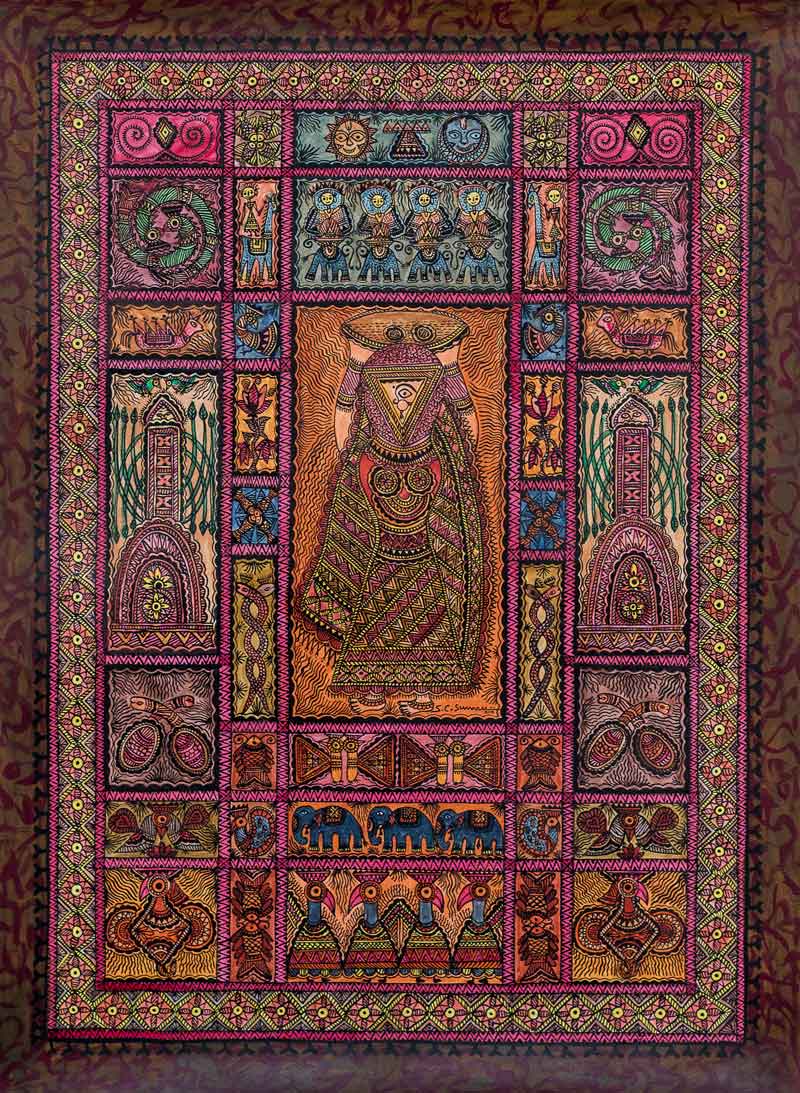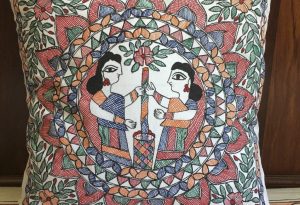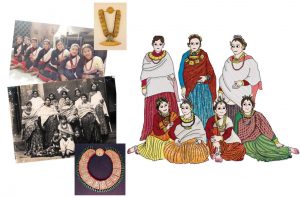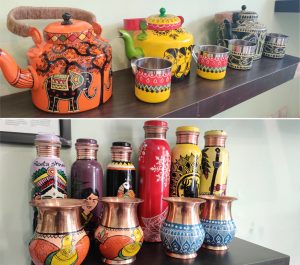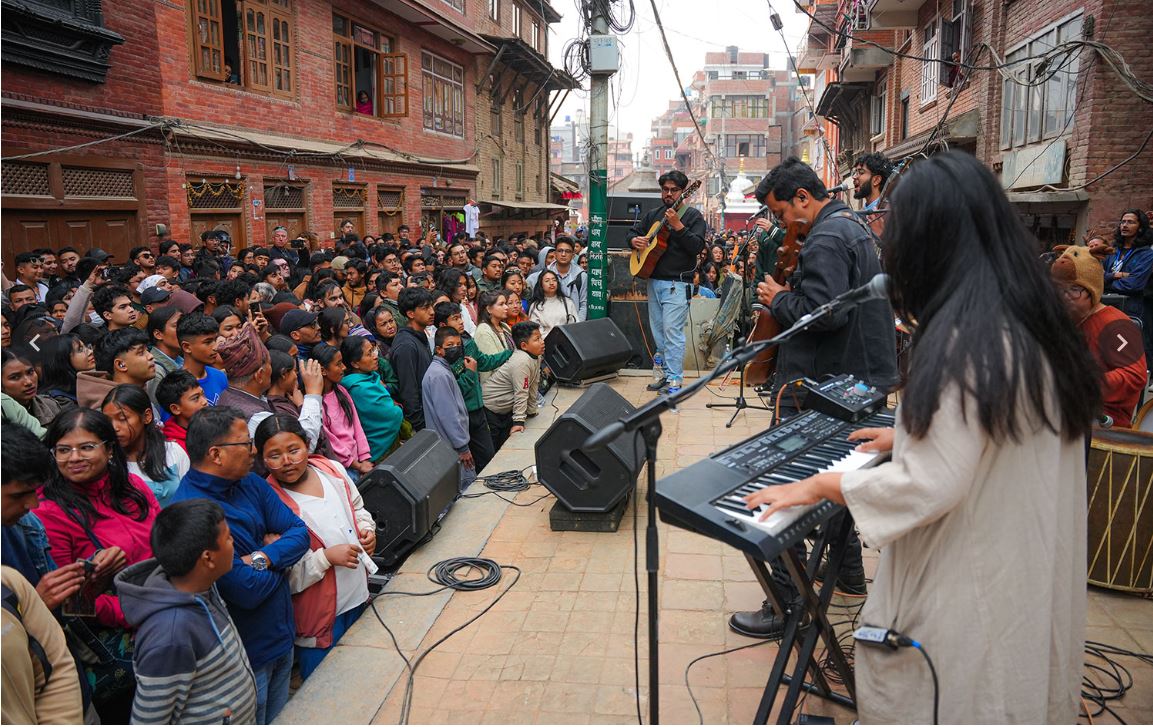Recently, Mithila artist SC Suman participated in the ‘Our Home—The Belt and Road Nation’s Art Exhibition’ with his artwork in China. This event was jointly organised by the China Artists Association and Shanghai Art Museum.
Suman feels it was his honour to participate in the exhibition. He also donated his artwork to the Beijing Biennale, which was later collected by the Chinese Artists Association.

Suman feels participating in that event has been an achievement per se for a Mithila artist because it was not imagined until a few years ago. Like him, people observing the development of the art scene in Nepal feel Mithila paintings have also received due promotion although the discipline remained ignored until just recently.
A difficult journey
“After several hardships, we have paved the board roadway for the promotion of the Mithila paintings,” says Suman.
Mithila art is a form of folk art traditionally practised by women in the Mithila region on mud walls. It was only after 1990, when the Panchayat regime ended, that this art form began garnering some appreciation and attention and was accepted as one of the Nepali folk arts. Suman says that he had a solo Maithili Art Exhibition in Biratnagar in 1991, claiming this is the first of its kind in Nepal.
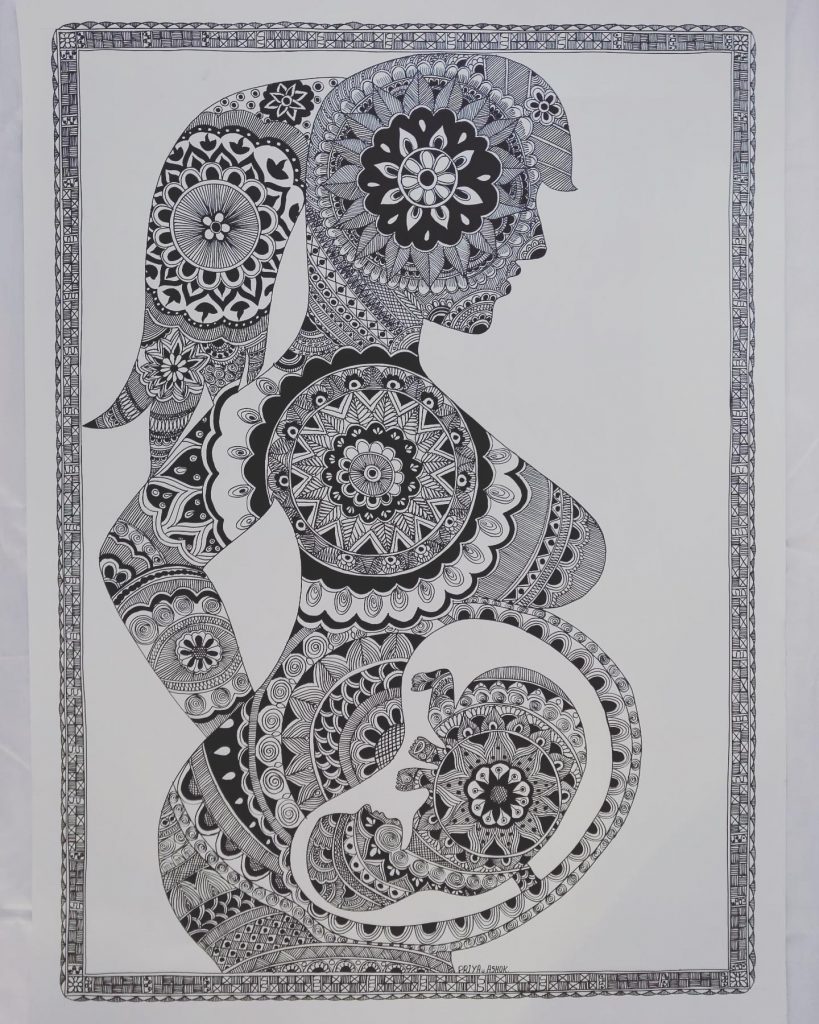
Likewise, Sujeet Karn, a founder of the House of Mithila, an enterprise promoting Mithila art and culture, feels that the division of the ancient Mithila region into two political territories (Nepal and India) has impacted the Mithila art differently. He further explains, “Mithila art got promoted much earlier by the Indian government during the early 1970s as Madhubani art. But, it took a while in Nepal.”
Karn, who is also an anthropologist, summarises the journey of the Mithila art till date, “There has been a shift in Mithila arts from paintings depicting daily life cycle and rituals or everyday life of a household (cultural heritage) to the use of western aesthetics and symbolism. Also, A shift from folk art to fine arts and to skill transfer (commercialisation of the art) can be noticed.”
After the 1990s, the Mithila paintings and artists entered the art scenes in the country. Gradually, solo and group exhibitions began to happen in the capital and other parts of the country. Soon, the Mithila artworks made it to the international forums and museums.
Artists in the forefront
For all these achievements of the Mithila arts, Suman attributes the continuous hard work and passion of the artists. He views that the government has not done much for the promotion of this form of art.
Because of the struggle of the artists, Mithila paintings have evolved from mud and cow dung coated walls and patio to paper, canvas and now to mainstream art galleries and museums, explains Sangeeta Thapa of Siddhartha Art Gallery.

On the commercial front, Mithila paintings that have now also transferred into objects like bags, cups, and many more are getting noticed and popular within the country and outside as well.
However, Mithila Devi Yadav, head of the Department of the Folk Arts at Nepal Academy of Fine Arts, says otherwise. As per Yadav, the present market of the Mithila paintings is still not satisfying.
“I have been professionally engaged in this sector from the late 1980s and have also started an organisation in Janakpur after some years. I trained about 45 people in the Mithila paintings then. Earlier, I along with my team used to be too occupied with the orders of the Mithila painting from in and outside of the country,” she says, “But, now, the number of orders has significantly dropped and we still can’t figure out the reason.”
Comparison with other forms of Nepali art
Yadav’s point can be valid as Thangka and Paubha paintings from Nepal have already made their recognition in the international market, but Mithila paintings have not.
But, Thapa asserts that different art forms have their own beauty and unique identity, hence cannot be compared.
“Some of the colours used in Paubha paintings are mineral pigments which have the dust of semi-precious stones. On the other hand, Mithila artists use locally available colours extracted from cow-dung, flowers, grass, and vegetables,” she reasons, “So, we can’t compare two different arts.”

On the other hand, Suman shares that the price and popularity of the paintings depend on the career journey, expertise and traditional skills of the artists, theme and colour combination of the artwork. Art lovers readily invest a good amount on his paintings, confirms Suman.
But, Suman complains the government and the Nepali society, in general, has not been inclusive enough to accept Mithila art as Nepali art. Seconding Suman, Karn adds that there has not been proper research and documentation of the Mithila art and languages.
So, what next?
Suman views the Nepal Academy of Fine Arts should play a pivotal role in promoting folk arts like Mithila art. Besides, artists themselves should work hard with all the passion and garner the market attention into their artworks.
Likewise, Yadav adds, “The Ministry of Culture, Tourism and Civil Aviation should come forward to promote the Mithila artworks in the national as well as international arena.”
Further, Karn stresses the importance of orientation for artists (who are mostly household women) to take them to the mainstream so as to take this art forward.
Also, both Karn and Suman share that there is a need for research-based documentation on Mithila arts and the government should come up with creating various resources for the researchers and writers.



